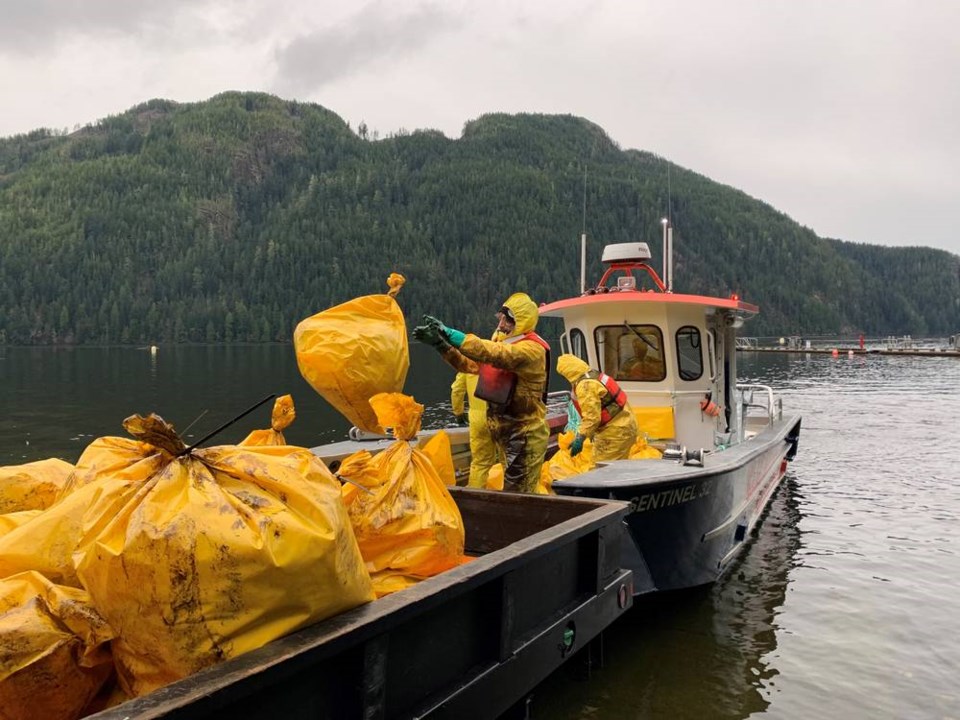Federal, provincial and Indigenous officials are still scrambling to contain fuel from an old shipwreck fouling the waters of Nookta Sound.
On Monday — the 53rd anniversary of the sinking of the MV Schiedyk — the spill response team said it had laid out 3,124 metres of absorbent booms and collected more than 120 bags of soiled organic waste from the areas around Bligh Island and Zuciarte Channel.
The 483-foot Schiedyk grounded and went down on Jan. 4, 1968, after loading barley and pulp in Gold River. It likely had full fuel tanks, although the amount of fuel on board isn’t known.
Officials say the wreck is resting hull up in about 350 feet of water and leaking heavy fuel oil at a rate of one to four litres per hour — and the rate may be increasing. A coast guard official said last month it was difficult to say how much oil had escaped, but there was at least 30 to 50 litres of oil on the water at any given time.
The oil first started appearing on shorelines in early December.
So far, officials are reporting minimal impact to wildlife. A dead sea otter was found in mid December and was sent for a necropsy to determine the cause of death.
Another otter had been observed with an oil sheen, but “looked healthy and was actively feeding,” according to the latest report from Department of Fisheries and Oceans. “If the sheen and discharge continue to be minimal and the otter continues to be healthy, there may be no need to capture the sea otter to remove from the area,” the report said.
The DFO’s Marine Mammal Unit noted booms seem to keeping the fuel from sensitive wildlife habitat.
“There is very little active sheen/oil outside the containment boom, so wildlife concerns and risk appear to be minimized/lowered if the current conditions continue,” the report said.
The Marine Mammal Unit also said it has observed a humpback whale, harbour seals, stellar sea lions and great blue herons in the vicinity, but the animals were not affected by the fuel.
Twelve vessels led by the Canadian Coast Guard Ship Bartlett, which is anchored in Zuciarte Channel, are involved in the day-to-day operations.
Fixed-wing and rotary aircraft as well as drones are also being deployed to monitor the surface sheens and provide real-time directions to ground crews deploying containment booms.
The information is used to support recovery operations and future trajectory modelling, said coast guard spokeswoman Kiri Westnedge.
She said weather within the steep mountains that surround Nootka Sound continue to challenge aerial observations.



